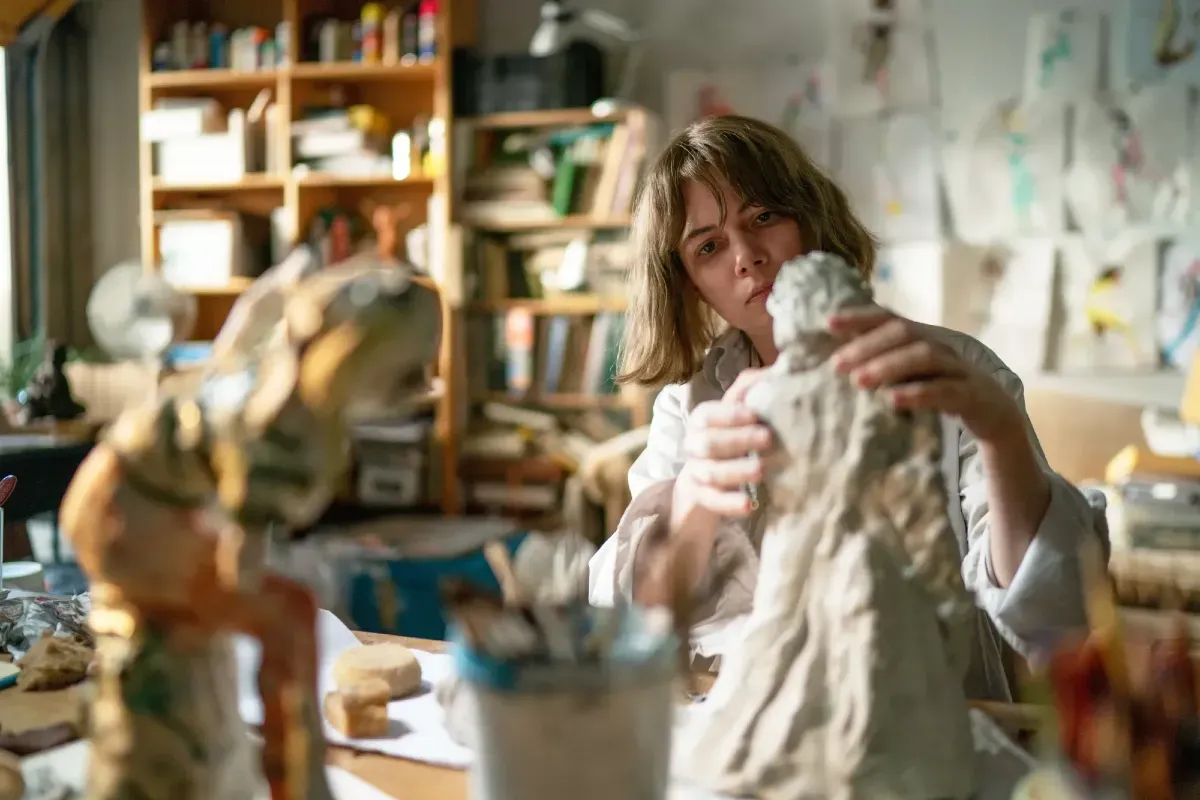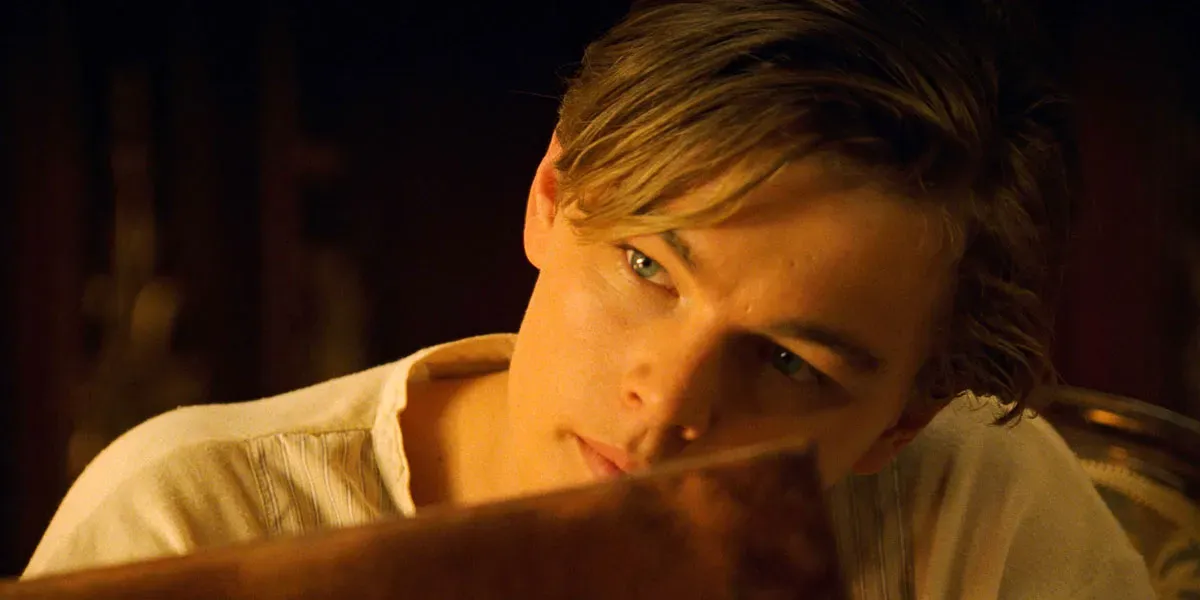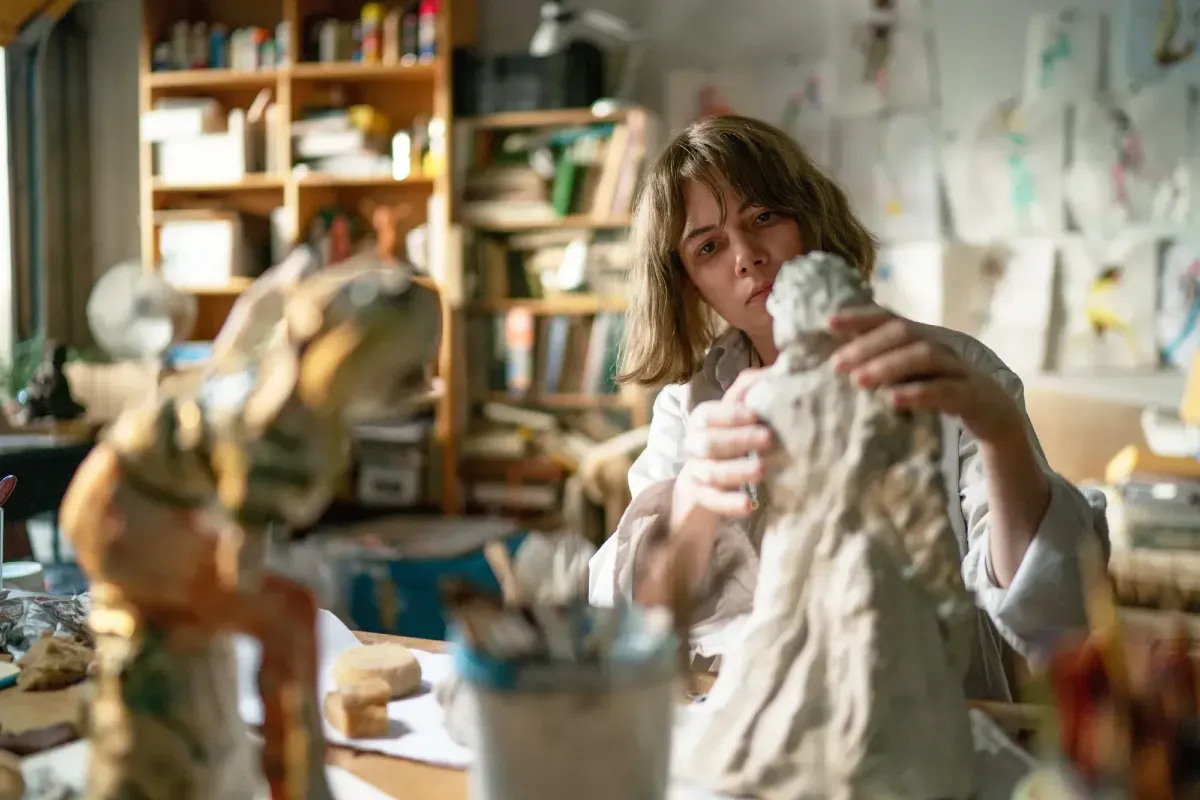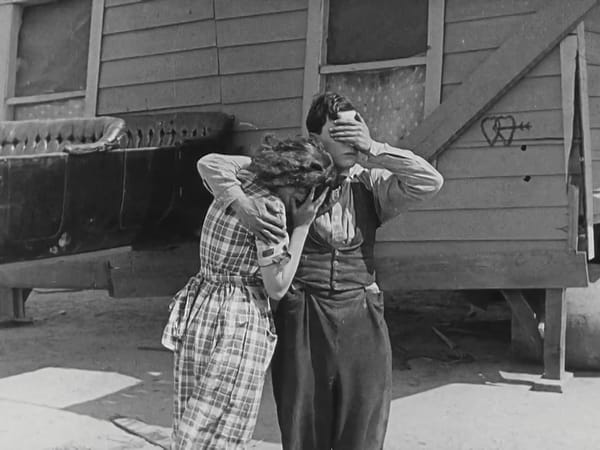Psycho. #57
Real art.


I was watching the pretty forgotten The Man from Elysian Fields the other night where Andy Garcia plays a talented novelist whose career is faltering. The thing is his books in the movie – including his debut "Hitler's Child" – sound mostly dreadful, and then I thought of all the terrible authors immortalised on screen. It got me wondering – is there a fictional artist in cinema whose work sounds appealing to you if it really existed?
A lovely question, thank you! It’s always been a point of utmost hilarity to me that films focusing on artists or creative people always mess that aspect up so badly. How does it happen?
I think the likely answer is that many films display a rather poor understanding of any occupation other than filmmaking, and by the same logic whereby films feature preposterous teachers (Dangerous Minds, 1995), presidents (Air Force One, 1997) or architects (500 Days of Summer, 2009), the painters and writers we see on film are similarly guessed at and terrible. When I was very briefly an actor, I found that the filmmakers I worked with had a fairly poor conception of things outside of their own world: they would ask me, a child of school-going age, if I could make an appointment at 2pm on a Tuesday; they didn’t really comprehend what, say, an accountant did. The end result of this is that, in a bunch of films, we see accountants vaguely jiggling at their calculators – tap tap tap, that’ll be 512 percent dollars please! Why would the artists we see in films be any better at their supposed jobs than this?
Send your questions anonymously to Caspar at this link, no personal information is collected.
When I received your question I tried to think back to some of the terrible art I’ve seen in films over the years, and I realised that not many movies stand out particularly in this regard: it’s really just that that is the predominant case for all films, I think, and I have grown to accept it as a situation. A few films do feature some memorable instances of this however. When Jack shows Rose his notebook of drawings in Titanic (James Cameron, 1997), you would be forgiven for laughing out loud at the sheer vulgarity of the work on display; but Rose, a young woman of noble extraction who has grown up in a world closely connected to art, murmurs, “this is exquisite work…” while thumbing through the pages. Later, Jack draws a post-coital Rose in the nude, and the resulting picture is hilariously bad: 200 street artists in Montmartre on any given Saturday could knock up something less tacky for 45 euros in under half an hour. The drawing is not just awful – it’s crass, ahistorical, and inaccurate. Anyway, guess who did Jack’s drawings in Titanic (James Cameron, 1997). Go on, guess. It’s…………………………………….. James Cameron! Well, you could knock me down with a feather.
Likewise, I do think we’re supposed to be impressed by the art of Emma (Léa Seydoux) in Blue is the Warmest Colour (Abdellatif Kechiche, 2014) – and this time, the director at least had recourse to the services of a professional painter, one Cécile Desserle. I can only say, with all due respect to this good person and her practice as an artist, that I find the paintings in Blue is the Warmest Colour perfectly ghastly, and not a million miles from the glazed, cliché eroticism of Jack’s horrible sketches in Titanic. I find the photorealism and plasticity of these portraits distasteful, and lacking in artistic vision. I also think it implausible, in terms of characterisation, that Emma, a young queer artist with a punkish sort of attitude to the world, would make such deeply conventional works; she would be more likely, I think, to have a figurative approach, and try to sublimate the world around her into paintings that are less superficial and easy in their eroticism. Man, I really hate these paintings! What’s the point of being an artist if you’re going to produce this kind of AI seaside crap?

I’m also reminded of two films starring Adam Driver: Annette (Leos Carax, 2021), and Paterson (Jim Jarmusch, 2016). In the former, he plays a famous stand-up comedian (?) and in the latter, a poet. For Annette, I can only say that Carax doesn’t seem to have drawn on the services of, say, Maria Bamford, to help craft a few, what’s the word I’m looking for?, funny things, you say them with words, help me out here – oh yeah, jokes. I don’t expect painstaking verisimilitude from Leos Carax, a director after all who has a recurring character called “Monsieur Merde”, but I do think that Adam Driver playing a funnyman is bound to take me out a little. In Paterson – a film I find absolutely insufferable but which everybody else, presumably having taken drugs that I wasn’t given access to, thought was wise and charming – Driver plays a bus driver (!) who is also a wonderful poet. This simple man doesn’t want anything more in his life than to have an insanely hot wife and a nice house, drive his bus, and write his poems. Wow! How delightful. How un-internet of him! Good for him, being so zen. Paterson seems to be modelled on William Carlos Williams, a writer who lived a perfectly anonymous and conventional life, but to me the poems, which are written for the film by a professional poet, are smug and self-regarding, gnomic. There is no interest in their meter or their language; rather, they rehearse a kind of preening simplicity, taking pride in the flatness of their quotidian observations. The awfulness of this poetry, for me, participates in the failure of the film.
Having listed a few standouts with bad art, I feel I should quickly shout out what I consider to be good art in certain films. Kelly Reichardt’s beautiful and intimate Showing Up (2022) is everything that Paterson tries to be and fails at: it depicts the home life and artistic practice of a young and uncelebrated American artist, tenderly and thoughtfully, and – this is crucial, because Paterson has no humour whatsoever – is deeply funny. In the lead role, Michelle Williams offers up a character who is spiky and unlovable, who seems to spend her life whingeing; alongside this, and the minor nuisances that afflict her, she makes gorgeous sculptures that are full of craft and detail, which seem to have life and purpose. What is brilliant in Showing Up is that you expect this woman, a minor artist obsessed with the menial problems of her everyday, and disregarded by those surrounding her, to be a kind of crap artist – but she isn’t, and the film shows that she gives her craft a lot of care, that it means something. The work of the artist Cynthia Lahti, who is responsible for these pieces, plays a strong part in characterising the dedicated, determined woman at the heart of this film.

I love the paintings of Chuck Connelly, who lends his hands and artwork to the short film Life Lessons (Martin Scorsese, 1989). The film is part of a trilogy – the two other shorts it was released with are by Francis Ford Coppola and Woody Allen – and is comfortably the best offering overall, telling the story of the destructive relationship between a painter (Nick Nolte) and his assistant (Rosanna Arquette). What the film does brilliantly is to depict the artistic process, which in the case of this artist is hungry and all-consuming; it comes at the detriment of other considerations, and you can see in it the vision, the inspiration, of the true artist. There is a rich understanding of light and texture, and the hulking Nick Nolte is used very well, showing how primal this man is in his act of creation. Connelly, interviewed about the film, said that it was no Raging Bull and called it cliché: this enraged Scorsese, who never spoke to him again; and Connelly attributed the later stalling of his career as an artist to his criticism of the film. I can actually see where the accusation of cliché comes from, because the film does work at this fairly generic idea of an artist who is swept up in the act of creation and who is at odds with the politesse of society, etc etc: and yet, it works, because Connelly’s paintings are so deeply beautiful, and Scorsese films them well, and lovingly. The truth behind the cliché is investigated here.
OK, last one – and this is an outlier. Afire (Christian Petzold, 2023) tells the story of Leon, a novelist who has taken himself to the seaside to finish writing his latest book. From the start, the film shows him to be a bumbling, self-important, blinkered prig – and Thomas Schubert, in the lead role, is unsparing in his characterisation of this writer who is at odds with his surroundings, showing somebody totally convinced of his own value. What a stunning master stroke Petzold plays, then, with the revelation that the book he is writing is perfectly diabolical. Although the incredibly naff title of “Club Sandwich” (!!!) already seems like a bad omen, we can hold out hope that Leon’s grouchy behaviour has been worthwhile – until the wonderful scene where Leon’s editor actually reads aloud from the book. There is no denying then – and Leon must surely have known this – that this book has no literary value at all; it’s a witless collection of inanities. The reading-out of the book becomes almost an act of torture, so hilariously terrible is this prose. Petzold takes wicked pleasure in these ironies; I only wish he had completed that vision by giving the film a darker, more satirical ending, rather than gifting his pompous central character a moment of undeserved redemption. But that moment – the delicious reveal that this writer’s book sucks – lives long in the memory.
Send your questions anonymously to Caspar at this link, no personal information is collected.




